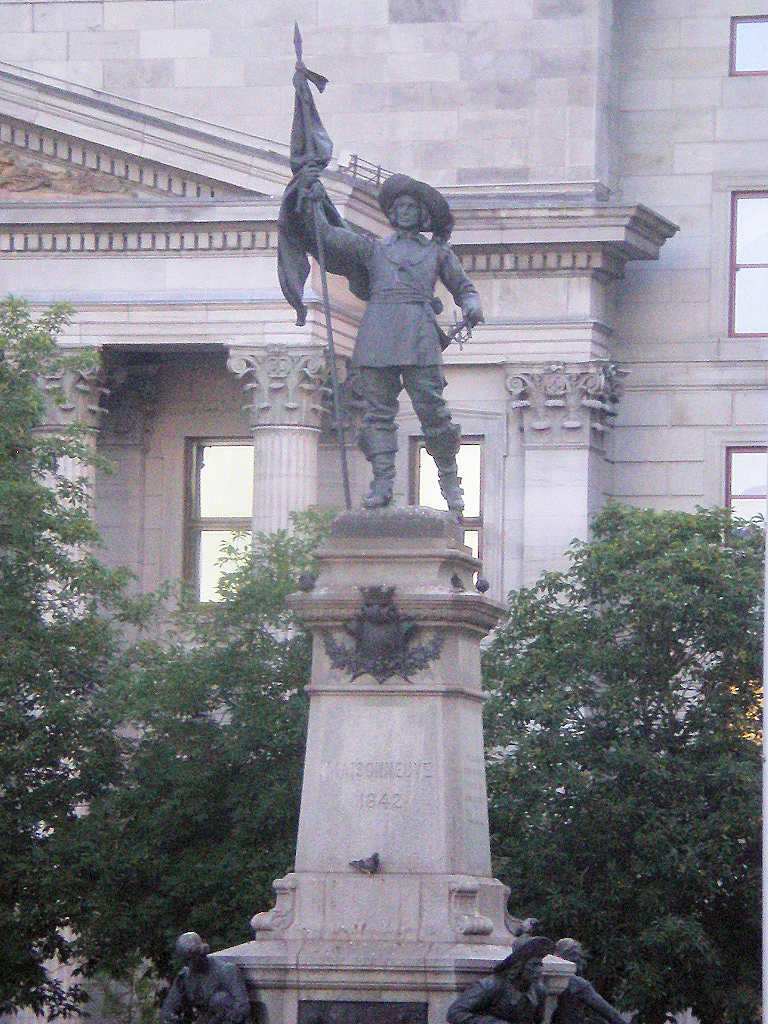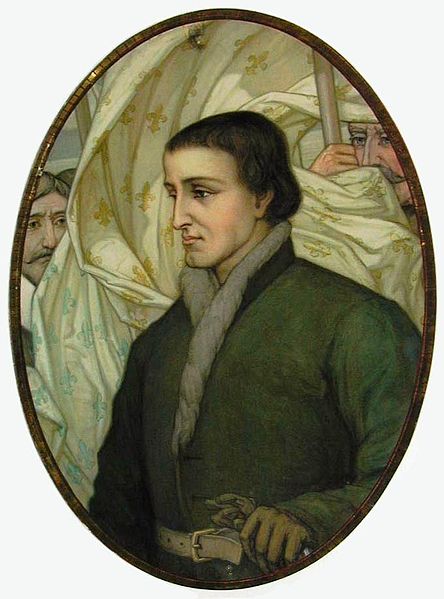At Villemarie it was usually dangerous to pass beyond the ditch of the fort or the palisades of the hospital. Sometimes a solitary warrior would lie hidden for days, without sleep and almost without food, behind a log in the forest, or in a dense thicket, watching like a lynx for some rash straggler. Sometimes parties of a hundred or more made ambuscades near by, and sent a few of their number to lure out the soldiers by a petty attack and a flight. The danger was much diminished, however, when the colonists received from France a number of dogs, which proved most efficient sentinels and scouts. Of the instinct of these animals the writers of the time speak with astonishment. Chief among them was a bitch named Pilot, who every morning made the rounds of the forests and fields about the fort, followed by a troop of her offspring. If one of them lagged behind, she bit him to remind him of his duty; and if any skulked and ran home, she punished them severely in the same manner on her return. When she discovered the Iroquois, which she was sure to do by the scent if any were near, she barked furiously, and ran at once straight to the fort, followed by the rest. The Jesuit chronicler adds, with an amusing naiveté, that while this was her duty, “her natural inclination was for hunting squirrels.”
Maisonneuve was as brave a knight of the Cross as ever fought in Palestine for the sepulcher of Christ; but he could temper his valor with discretion. He knew that he and his soldiers were but indifferent woodsmen; that their crafty foe had no equal in ambuscades and surprises,; and that, while a defeat might ruin the French, it would only exasperate an enemy whose resources in men were incomparably greater. Therefore, when the dogs sounded the alarm, he kept his followers close, and stood patiently on the defensive. They chafed under this Fabian policy, and at length imputed it to cowardice. Their murmurings grew louder, till they reached the ear of Maisonneuve. The religion which animated him had not destroyed the soldierly pride which takes root so readily and so strongly in a manly nature; and an imputation of cowardice from his own soldiers stung him to the quick. He saw, too, that such an opinion of him must needs weaken his authority, and impair the discipline essential to the safety of the colony.
On the morning of the thirtieth of March [1644], Pilot was heard barking with unusual fury in the forest eastward from the fort; and in a few moments they saw her running over the clearing, where the snow was still deep, followed by her brood, all giving tongue together. The excited Frenchmen flocked about their commander.

Maisonneuve Monument at Place d’Armes, Montreal. Erected in 1895, as part of the celebrations for the 250th anniversary of the founding of the city in 1892. The main statue on top is of Paul Chomedey de Maisonneuve.
“Monsieur, les enemis sont dans les bois; ne les irons-nous jamais voir?”
Maisonneuve, habitually composed and calm, answered sharply,—
“Yes, you shall see the enemy. Get yourselves ready at once, and take care that you are as brave as you profess to be. I shall lead you myself.”
All was bustle in the fort. Guns were loaded, pouches filled, and snow-shoes tied on by those who had them and knew how to use them. There were not enough, however, and many were forced to go without them. When all was ready, Maisonneuve sallied forth at the head of thirty men, leaving d’Ailleboust, with the remainder, to hold the fort. They crossed the snowy clearing and entered the forest, where all was silent as the grave. They pushed on, wading through the deep snow, with the countless pitfalls hidden beneath it, when suddenly they were greeted with the screeches of eighty Iroquois, who sprang up from their lurking places and showered bullets and arrows upon the advancing French. The emergency called, not for chivalry, but for woodcraft; and Maisonneuve ordered his men to take shelter, like their assailants, behind trees. They stood their ground resolutely for a long time; but the Iroquois pressed them close, three of their number were killed, others were wounded, and their ammunition began to fail. Their only alternatives were destruction or retreat; and to retreat was not easy. The order was given. Though steady at first, the men soon became confused, and over-eager to escape the galling fire which the Iroquois sent after them. Maisonneuve directed them toward a sledge track which had been used in dragging timber for building the hospital, and where the snow was firm beneath the foot. He himself remained to the last, encouraging his followers and aiding the wounded to escape. The French, as they struggled through the snow, faced about from time to time, and fired back to check the pursuit; but no sooner had they reached the sledge track than they gave way to their terror, and ran in a body for the fort. Those within, seeing this confused rush of men from the distance, mistook them for the enemy; and an over-zealous soldier touched the match to a cannon which had been pointed to rake the sledge track. Had not the piece missed fire, from dampness of the priming, he would have done more execution at one shot than the Iroquois in all the fight of that morning.
Maisonneuve was left alone, retreating backwards down the track, and holding his pursuers in check, with a pistol in each hand. They might easily have shot him; but, recognizing him as the commander of the French, they were bent on taking him alive. Their chief coveted this honor for himself, and his followers held aloof to give him the opportunity. He pressed close upon Maisonneuve, who snapped a pistol at him, which missed fire. The Iroquois, who had ducked to avoid the shot, rose erect, and sprang forward to seize him, when Maisonneuve, with his remaining pistol, shot him dead. Then ensued a curious spectacle, not infrequent in Indian battles. The Iroquois seemed to forget their enemy, in their anxiety to secure and carry off the body of their chief; and the French commander continued his retreat unmolested, till he was safe under the cannon of the fort. From that day, he was a hero in the eyes of his men.*
Quebec and Montreal are happy in their founders. Samuel de Champlain and Chomedey de Maisonneuve are among the names that shine with a fair and honest luster on the infancy of nations.
* Dollier de Casson, MS. Vimont’s mention of the affair is brief. He says that two Frenchmen were made prisoners, and burned. Belmont, Histoire du Canada, 1645, gives a succinct account of the fight and indicates the scene of it. It seems to have been a little below the site of the Place d’Armes, on which stands the great Parish Church of Villemarie, commonly known to tourists as the “Cathedral.” Faillon thinks that Maisonneuve’s exploit was achieved on this very spot.
Marguerite Bourgeoys also describes the affair in her unpublished writings.
Francis Parkman, The Jesuits in North America in the Seventeenth Century (Boston: Little, Brown, and Company, 1897, 2:89–94.
Short Stories on Honor, Chivalry, and the World of Nobility—no. 858












